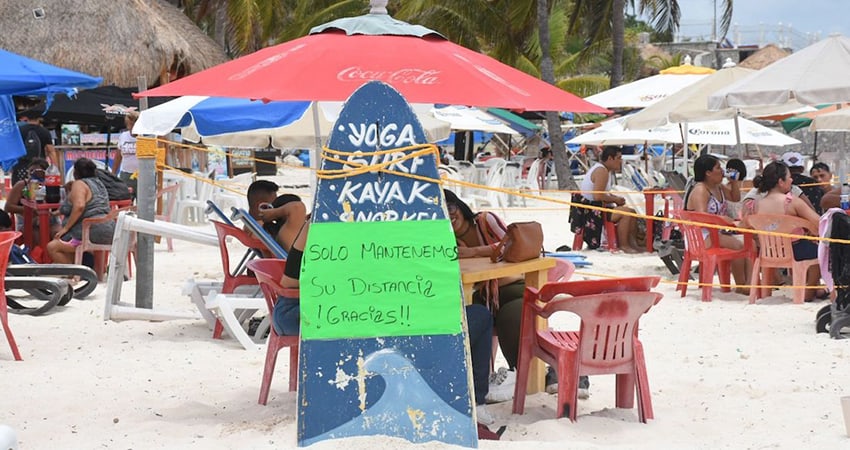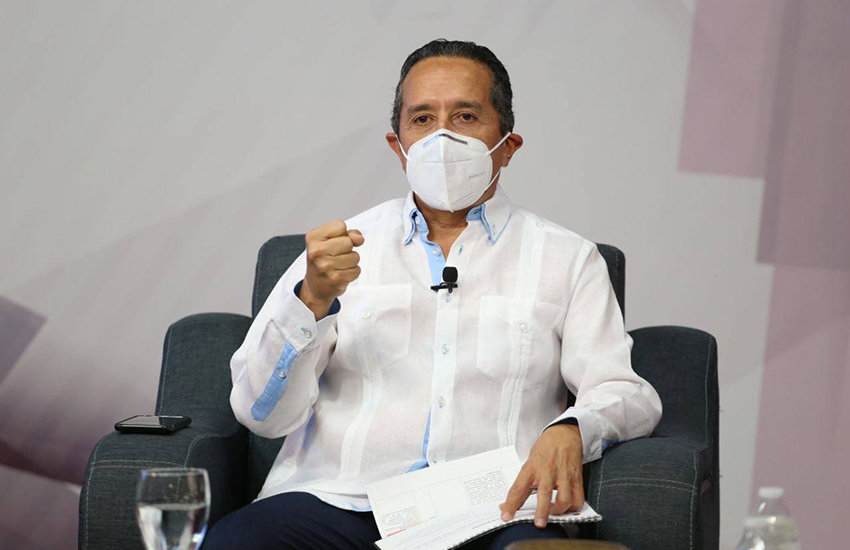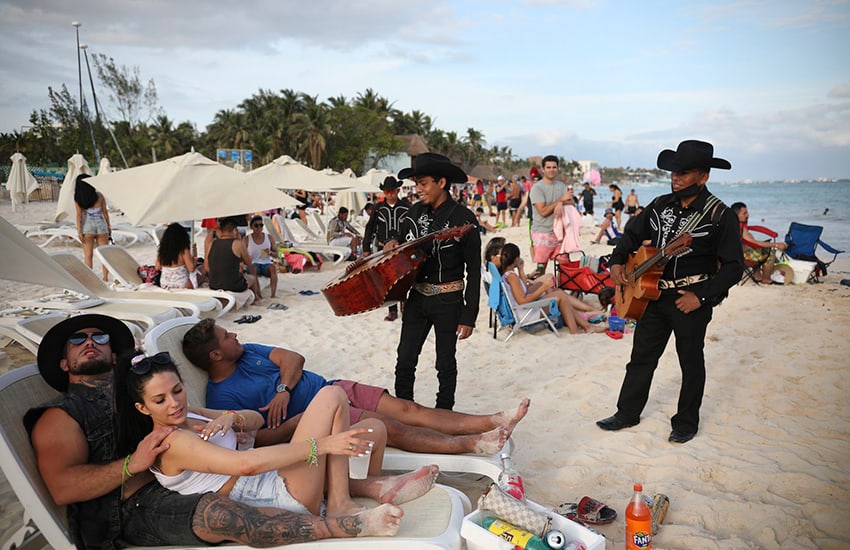While the coronavirus situation has improved markedly in much of Mexico during recent months, one exception is Quintana Roo, where new case numbers remain stubbornly high.
The Caribbean coast state, home to popular destinations such as Cancún, Playa del Carmen and Tulum, has recorded an average of 140 new cases per day during recent weeks, the highest level since December.
The only high-risk orange light state on the federal government’s coronavirus stoplight map, Quintana Roo has now recorded more than 27,000 confirmed cases and almost 2,800 Covid-19 deaths.
According to federal health authorities, case numbers have been on the rise in the state for five weeks, and Cancún — the state’s premier destination — is driving the increase. There are currently an estimated 1,158 estimated active cases in the state, the fifth-highest figure among Mexico’s 32 states.
Hospitalizations of Covid-19 patients are also trending upwards, according to state Health Minister Alejandra Aguirre, who attributed the spike in cases to an increase in people’s mobility. More than 200 Covid patients are currently hospitalized, most of whom are in facilities in the northern half of the state, where Cancún is located.

The situation prompted Governor Carlos Joaquín to announce 10 new measures to drive down new infections and ultimately save lives.
“If we continue with this trend of growth in infections, we could reach the red [maximum-risk] stoplight level. Faced with this trend, I’m announcing 10 new actions … that we must carry out,” he said in a video message posted to social media on Monday. The measures took effect on Tuesday.
“… This is serious, and the immediate future of Quintana Roo residents depends on these measures.”
Among them are a 12:00 a.m.–5:00 a.m. curfew in Cancún, Playa del Carmen and Tulum; increased vigilance of public transit to ensure adherence with health protocols including the wearing of face masks; increased Covid-19 testing; shorter business hours in the north of the state; a push to administer greater numbers of Covid-19 vaccines, especially to tourism sector workers; the mapping of active coronavirus cases at a neighborhood level so that hotspots can be identified and citizens can be informed of the risk they face; and a crackdown on parties and social gatherings that violate health protocols.
It remains to be seen whether the measures will be effective in controlling the current outbreak, and whether Quintana Roo will avoid regressing to the red stoplight level, which would entail the implementation of stricter restrictions and deal a devastating blow to the tourism sector, the main driver of the state’s economy.
Joaquín warned three weeks ago that the state was at high risk of switching to red on Quintana Roo’s own stoplight map, which the state government has used to guide the implementation and lifting of restrictions.

Federal health official Ruy López Riadura said this week that the common denominator between the states where case numbers are on the rise – Yucatán, Campeche, Colima and Baja California Sur have also seen recent spikes – is the return of tourism.
Quintana Roo is Mexico’s most visited state, and international tourists, especially United States citizens, have continued to travel there during the pandemic, encouraged by Mexico’s lax entry requirements (negative Covid tests are not required, for example) in comparison to many other countries.
Mexican and foreign tourists flocked to the state during the spring break and Easter vacation period earlier this year, and in many cases were less than strict with their observance of virus mitigation protocols — even as they frequented busy places such as bars and restaurants.
Such behavior, of course, is an invitation for the virus to spread, a reality recognized by National Autonomous University epidemiologist Alfonso Vallejo.
“With all the measures that have been taken, tourism itself is not the problem but rather [the gathering of] crowds and the absence of preventative measures,” he told the newspaper El País.
“We’re talking about a highly infectious virus, which is transmitted through the air from person to person; sooner or later the cases will arrive,” Vallejo said.

According to Aguirre, the state health minister, the reactivation of tourism has not only brought large numbers of outsiders into Quintana Roo but also caused locals — many of whom work in the tourism sector — to move about more, which places them at greater risk of exposure to the coronavirus.
She said the state wants to avoid reaching “a compromised epidemiological situation” but declined to advocate an economic shutdown as a means to bring the spread of the virus under control.
“The economic reactivation we have today cannot be stopped,” the minister said.
Although their effectiveness against the different strains of the virus that have emerged is unclear, Covid-19 vaccines still appear to be the main ticket out of the pandemic for Mexico. In that respect, Quintana Roo is making progress, although rising case numbers attest that there is still a long way to go to stop or at least significantly stymie the spread of the virus.
The state government reported Wednesday that more than 342,000 vaccine doses had been administered in Quintana Roo’s 11 municipalities, including more than 138,000 in Benito Juárez, which includes Cancún. As the state has a population of approximately 1.8 million, that means that about 19 shots have been given per 100 people, a figure below the national 25 per-capita rate, according to The New York Times vaccinations tracker.
“The most effective way to stop the pandemic is vaccination,” said Vallejo.
